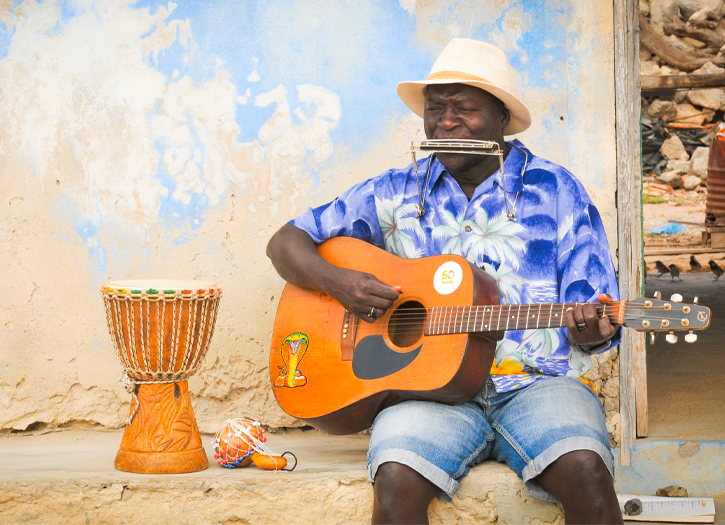The coladeira is a music genre from Cape Verde. As a music genre the coladeira is characterized by having a variable tempo, from allegro to andante, a 2-beat bar, and in its most traditional form by having an harmonic structure based in a cycle of fifths, while the lyrics structure is organized in strophes that alternate with a refrain. The coladeira is almost always monotonic, i.e. composed in just one tonality.
Generally, the subjects that the coladeira talks about are satires, social criticism, jokes and playful and happy themes. According to Carlos Filipe Gonçalves,the original themes of the Boa Vista morna were precisely these ones. But after the thematic change in the passage from the Boa Vista morna to the Brava morna, the emerging genre coladeira would have taken over the initial thematic of the Boa Vista morna. These themes remind the mediaeval escárnio e maldizer songs from Portugal.
The composition of a group for playing the coladeira is not rigid. A medium-sized band may include besides a guitar (popularly called “violão” in Cape Verde) a cavaquinho (that plays the chords rhythmically), a solo instrument besides the singer’s voice and some percussion. A bigger band may include another guitar, an acoustic bass guitar, more than one solo instrument (a violin — popularly called “rabeca” in Cape Verde —, a clarinet, a trumpet, etc.) and several percussion instruments (a shaker, a güiro, a cowbell, congas, etc.).The specific way of strumming the strings in a guitar is popularly called “mãozada” in Cape Verde. The strumming of the coladeira articulates a bass (played with the thumb, marking the beats) with chords.
From the 1960s it starts to happen the electrification of the coladeira, in which the percussion instruments are replaced by a drum kit and the bass / accompaniment play performed in the guitar is replaced by a bass guitar and an electric guitar. From the 1980s there is a big scale usage of electronic instruments (synthesizers, drum machines), being that usage much appreciated by some and criticized by others. In the late 1990s there is a comeback to the roots where unplugged (acoustic) performances are sought after again.In its most traditional form, the song starts by an introduction played in the soloist instrument (having this intro generally the same melody as the refrain), and then the song develops in an alternation between the main strophes and the refrain. Approximately after the middle of the song, instead of the sung refrain, the soloist instrument performs an improvisation.
As a dance, the coladeira is a ballroom dance, danced in pairs. The performers dance with an arm embracing the partner, while with the other arm they hold hands. The dancing is made through two body swings and shoulder undulations to one side, marking the rhythm’s beats of the bar, while in the next bar the swinging is made to the other side.
The word koladera initially referred to the act of going out and singing the colá.







Add Comment
You must be logged in to post a comment.